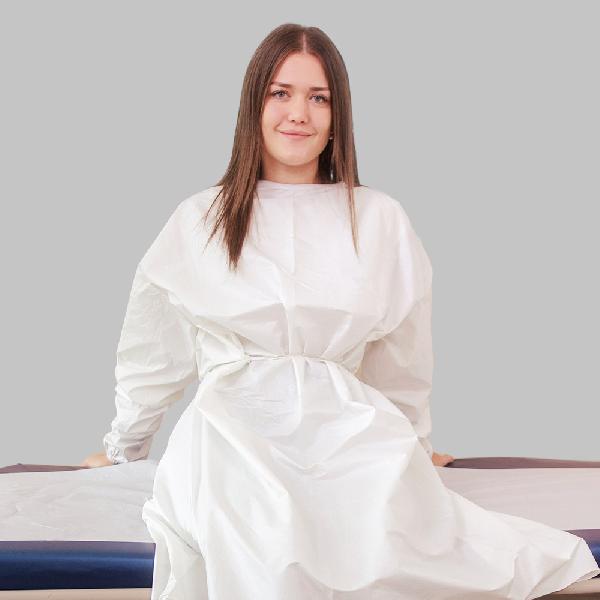Briefly Explain Isolation Gowns? | Penguin Health IntroductionDuring a pandemic, It is vital to be protected. Safety masks for face gloves, hand sanitizers, and gowns are mandatory. They serve to shield the wearer from the spreading of disease or illness in the event of contact with potentially irresistible fluids and rigid materials. They can also protect the isolation gown wearer from harmful microorganisms moving around that can cause harm to weak patients, such as those with fragile, insusceptible, or debilitated frameworks. Clinical gowns are a component of a more extensive treatment plan for controlling the disease.
Some of the phrases used to refer to gowns designed to be used in medical settings include the surgical dress, isolation gowns, surgical isolation gowns surgical gowns, gowns for procedural procedures, and workroom outfits.
What's the difference between an isolation garment and an operating gown?
Clinical faculty use disposable gowns to keep their dresses from being exposed to body fluids, blood, and other non-resistible substances or protect patients from infection. Disposable gowns are not appropriate in a medical setting or any other place where openness to large amounts of liquids or other hazardous liquids could be considered normal.
The basic level of protection should be the high levels of hindrance assurance in gowns and other garments used in medical clinics. It determines the testing techniques and results from execution to ensure that the dress meets the recent-discovered levels of assurance:
Level 1 gown:
Low risk, suitable for use in situations such as important considerations, regular confinement, covering costumes for guest guests, or even in an ordinary clinical facility.
> Creates a border to small amounts of liquid entry.
A single trial of water that affects an outer coating of fabric is used to execute insurance for survey hindrance.
Level 2 gowns:
Low danger and suitable for use, such as during blood draw or stitching in the ICU or an in-house pathology lab.
It hinders more extensive measures of entry by splatter and some liquid opening by Dowsing.
The tests conducted to assess the execution of boundary assurance:
Water that is affecting the surface of gown material
Condensing the material
Level 3 Gowns:
Moderate risk To be worn, for example, during blood vessel blood draws or placing within the Emergency Room or in case of injuries.
Level 4 gowns:High risk, suitable for use, for instance, during the prolonged, severe liquid process, a medical procedure where microorganism resistance is needed or when in the event of a suspected infection that is irresistible (non-airborne).
> Blocks all liquid infiltration for up to 60 minutes
> Could block VIRUS entry for up to 60 minutes.
> Regardless of the different tests conducted at levels 1-3, obstruction level execution is tested by reenacting blood that contains an infection. If no condition is detected at the end of testing, the dressing is deemed to pass.
Other terms used for Isolation gowns are barrier gowns, surgical gowns, and PPE garments, disposable ones, reusable ones, and non-surgical gowns.
What is the best way to select Isolation dresses?
When you're choosing your PPE Gowns, Consider three essential aspects. The first is the type of openness you expect to see. It is not established by the kind of openness exhibited by splashes, splatters, or touches or massive amounts of body fluids or blood that could get into the clothes. The choice of PPE, particularly the combination of PPE is not determined by the type of disengagement safety measures a patient has taken.
Another aspect, which is mainly connected to the previous one, is the etiquette and solidity of the PPE used for the task at hand. In particular, it can determine what outfit or cover is selected for PPE or if the segregation dress code is fixed and liquid-safe, liquid-proof, or not one or the other. The third factor is whether it's appropriate
What is the material hospital gowns are made out of?
Hospital gowns are made from durable enough to withstand washing in hot steaming water, usually cotton. They are typically hung on the back using a twill tape tie. Disposable hospital gowns could be plastic or paper and are secured with plastic or paper ties.
|
